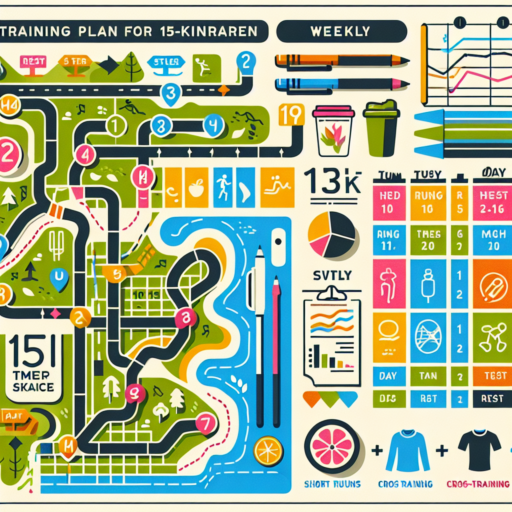How long should I train for a 15K?
Training for a 15K race requires a tailored approach, aiming at gradually increasing your endurance and speed. The ideal training duration for a 15K, which is approximately 9.3 miles, depends largely on your current fitness level and running experience. For beginners, a 10 to 12-week training program is often recommended. This period allows ample time to build up mileage safely, preventing injury while improving stamina.
For those with a more established running base, an 8-week training plan can be sufficient. This timeframe supports runners in fine-tuning their speed and endurance, focusing on more intensive sessions and longer distances. It’s essential to incorporate variety into your training, including speed work, long runs, and recovery days, to enhance overall performance and readiness for race day.
Regardless of the training plan duration, consistency and gradual progression are key. Incorporating cross-training activities, adequate rest, and a proper nutrition plan will also support your training journey. Listening to your body and adjusting your training as needed can help avoid overtraining and injuries, setting you up for a successful 15K race experience.
How to improve 15K time?
Improving your 15K time requires a combination of strategic training, proper nutrition, and rest. The key to shaving off minutes or even seconds from your run lies in understanding the unique demands of the 15K distance and tailoring your preparation accordingly. Below, we delve into practical strategies that can help any runner aiming to achieve a personal best in their next 15K race.
Structured Training Plan
Focusing on a structured training plan is essential. Include a mix of long runs, tempo runs, and interval training in your weekly schedule. Long runs build endurance, tempo runs improve your lactate threshold, allowing you to maintain a faster pace for longer, and interval training enhances your speed and recovery. Incorporating these elements into your training regimen can yield significant improvements in your 15K performance.
Nutrition and Hydration
Another critical aspect is optimizing your nutrition and hydration. Proper fueling before, during, and after your runs can drastically affect your training and race performance. Focus on a balanced diet rich in carbohydrates, proteins, and fats, and ensure you’re hydrating effectively—with water and electrolytes—to support recovery and enhance endurance.
Recovery and Rest
Last but not least, never underestimate the power of adequate recovery and rest. Your body needs time to repair and strengthen itself after hard workouts. Incorporating rest days, getting ample sleep, and considering activities like yoga or foam rolling can prevent injuries and keep you consistently training at your best.
No se han encontrado productos.
Can I go from 10K to 15K?
Moving from a 10K to a 15K distance is a significant milestone for many runners. It’s a challenge that requires not only physical readiness but also a strategic approach to training and nutrition. The jump from running 10 kilometers to tackling 15 kilometers may seem daunting, but with the right preparation, it’s definitely within reach. Here, we’ll explore some key strategies to help you make this transition smoothly and efficiently.
Building Your Base
Before you set your sights on reaching that 15K mark, it’s crucial to have a solid 10K foundation. If you’re comfortably running 10Ks, you’re already off to a great start. The next step involves gradually increasing your weekly mileage, focusing on slow, incremental gains to reduce the risk of injury. A general rule of thumb is to increase your total weekly distance by no more than 10% each week.
Incorporate Strength and Flexibility Training
Besides logging more miles, integrating strength and flexibility training into your routine can significantly impact your ability to go from 10K to 15K. Strength training, particularly exercises that target the core, legs, and glutes, can improve running efficiency and endurance. Simultaneously, incorporating flexibility exercises, such as yoga or dynamic stretching, can enhance muscle recovery and prevent injuries.
How to train to run 14km?
Embarking on the journey to train for a 14km run can be both exciting and challenging. It requires not only physical readiness but also a sound strategy that enhances endurance and speed. The first step towards achieving this goal is to assess your current fitness level. This assessment will help tailor a training plan that progresses gradually, reducing the risk of injury.
Following the initial assessment, the incorporation of interval training into your routine is crucial. Interval training involves alternating between periods of high-intensity running and recovery. This method boosts cardiovascular fitness, endurance, and can improve your running speed. It is recommended to start with shorter intervals, gradually increasing the time and intensity as your body adapts.
Another essential component is long-distance running. Initially, your long-distance runs may be significantly shorter than 14km, but gradually increasing the distance week by week prepares your body for the extended effort required on race day. It’s also vital to focus on your running form and pacing, which can significantly impact your efficiency and stamina during the run.



